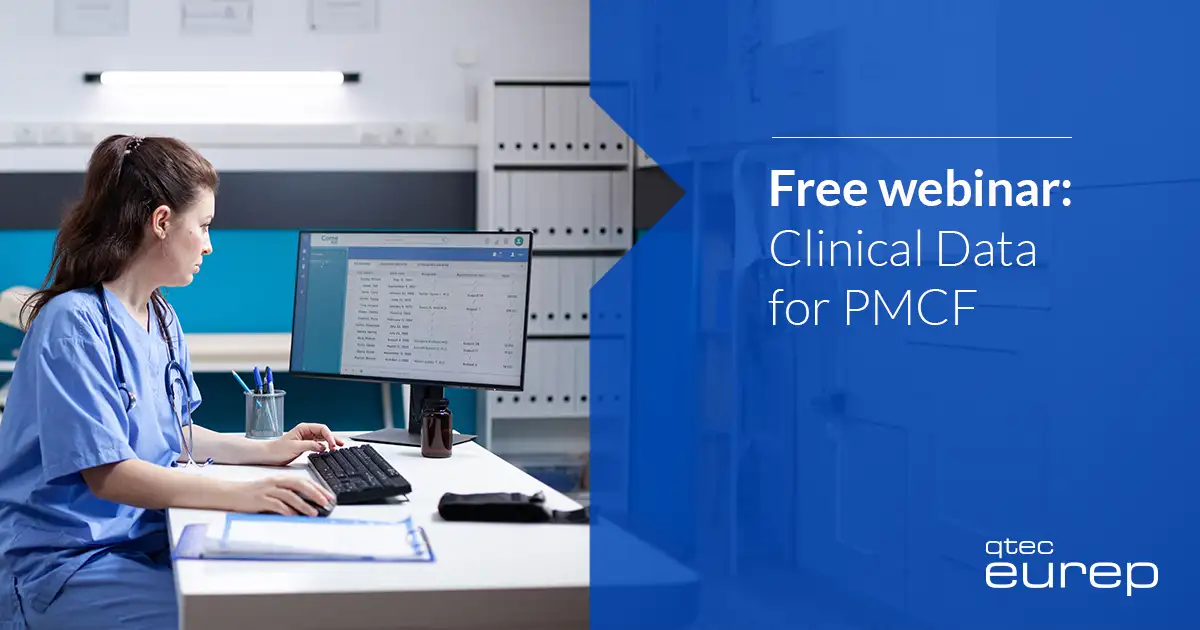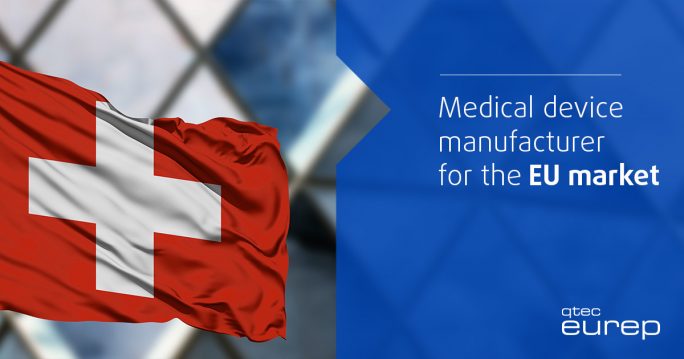
eurep free seminar pmcf
Free qtec qompakt webinar: PMCF – Clinical Data for Post-Market Clinical Follow-up
In our free qompakt webinar series, our speakers impart a wealth of specialist knowledge and share their practical experience. The Question & Answer session at the end of each webinar block is particularly popular.
You asked – we answered
The event PMCF – Clinical Data for Post-Market Clinical Follow-up on April 24, 2023 was a complete success. After Prof. Dr. Michael Imhoff, Clinical Director of the qtec Group, gave an insight into the various requirements for the PMCF, he answered many different questions from the participants for the last 20 minutes.
In this series of articles, we would like to answer a selection of these questions from our free webinar.
PMCF – Clinical Data for Post-Market Clinical Follow-Up

Question from our seminar participants:

Answer by Prof. Michael Imhoff:
"In MDCG 2020-5, there is a very detailed list of "equivalence" and a less detailed description of "similar devices". Roughly speaking, the equivalent product must be practically identical to my own product. Especially when it comes to the topic of functional equivalence, discussions often arise with notified bodies. What is meant by this? Let's take the example of two ventilators that are technically different but do the same thing for the patient. This means that the patient does not notice any difference between ventilator 1 and ventilator 2 because the performance data is identical in the end. Here we regularly encounter a need for discussion as to whether these two devices can then be considered as equivalent. With "similarity" it looks like this: As an example, let's stick with the two ventilators. They are similar because they do the same thing, namely ventilate, and are used for the same indication. This means that I cannot conclude from the similar ventilators that the performance of my own device corresponds to the performance of the similar device. But I can use it to prove the general clinical benefit of ventilators, or as a benchmark device to compare the data of my own device with it. I can and should also use data from similar devices to gain further insights into device safety. For example, if I find safety problems with a similar product, I should check whether I may have similar sources of risk with my product. For me, "equivalent" means "practically identical", "similar" means "they do the same thing but are technically the not same"."
» Prof. Imhoff's specialist knowledge is confident and impressive, as are his clever tips. He also knows how to deal with the bureaucratic problems and monstrosities in the best possible way.«
Franz Mechsner, Freelance Medical Scientific Advisor

Question from our seminar participants:

Answer by Prof. Michael Imhoff:
"In risk management, you have certain frequencies for the acceptance of residual risks. You use these for your estimates. For example, you accept a low health impairment in one in a thousand cases. However, if I see a risk acceptance of 1:1000,000 in risk management and my study can only statistically recognize a frequency of 1:1000, then I would question this as a reviewer of a notified body.
As far as the concrete case number estimation for a clinical study or a PMCF survey is concerned, you need assumptions, e.g. about the expected occurrence of an event or on the error range of the determination of the main target variable. Such a case number calculation is of course easier if you already have certain information on the expected frequencies or error ranges. This means that you have a certain idea of how widely the data can scatter. If you have no prior data, then you have no choice but to make a reasonably qualified estimate: "I expect (for whatever reason) the determination of my target variable to have a standard deviation of no more than X." You then determine the planned number of cases, taking the desired power into account. You may be completely wrong with this estimate, but experience has shown that if you use the clinicians' estimates of error ranges, your estimate should be in the right direction.
I haven’t actually seen a study being under-powered for such reasons. If you use estimated values because you couldn't use prior data for the study, you rather run the risk of overestimating the number of cases in the study. This does not reduce the quality of the study, but it does increase the costs."

Question from our seminar participants:

Answer by Prof. Michael Imhoff:

Question from our seminar participants:

Answer by Prof. Michael Imhoff:

Question from our seminar participants:

Answer by Prof. Michael Imhoff:
"Various factors play a role in obtaining the highest possible response rate, such as
- The length of the survey: the shorter, the better (ideally 5-10 minutes)
- How much does the doctor enjoy working with the product?
- Is a small donation offered for completing the survey?
If you have a stable sales organization or if you do direct sales in clinics, then the sales staff can ask directly on site whether there is interest. However, at the moment when I create surveys where managers have to obtain real case numbers or data, I expect a relevant effort from the respondents, which should then also be remunerated accordingly. This is no longer a compliance problem if there is work involved. We have had rather positive experiences with surveys so far.
Basically, however, you should always expect lower response rates and be happy if they turn out to be higher in the end."

Question from our seminar participants:

Answer by Prof. Michael Imhoff:

Question from our seminar participants:

Answer by Prof. Michael Imhoff:

Question from our seminar participants:

Answer by Prof. Michael Imhoff:

Question from our seminar participants:

Answer by Prof. Michael Imhoff:

Question from our seminar participants:

Answer by Prof. Michael Imhoff:
Our service for you:
You need support with your PMCF activities? Our experts will be happy to help you and support you, for example, in the collection and evaluation of clinical data or the continuous independent collection and evaluation of clinical data, conduct of PMCF studies, the development of a PMCF study design or the preparation and updating of periodic safety update reports (PSUR).
Feel free to contact us at info@qtec-group.com and arrange a free consultation.



